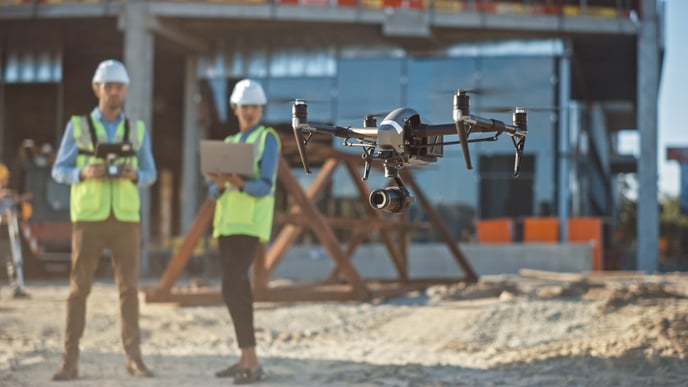What is the FAA Remote ID Rule?
Increased use of drones — both for consumer and commercial use — has led to new concerns about airspace safety and security.
 In response to these concerns, the U.S. Federal Aviation Administration (FAA) has established the Remote Identification of Unmanned Aircraft rule, commonly referred to as the Remote ID rule.
In response to these concerns, the U.S. Federal Aviation Administration (FAA) has established the Remote Identification of Unmanned Aircraft rule, commonly referred to as the Remote ID rule.
The Remote ID Rule
The FAA's Remote Identification of Unmanned Aircraft rule is a regulation established by the U.S. Federal Aviation Administration (FAA) to enhance the safety, security, and privacy of drones. The rule requires all drones operating in the U.S. to be equipped with a Remote Identification Module (RID) capable of transmitting identifying information about the drone and its operator to the FAA and other stakeholders in real-time.
The information transmitted will include the following:
-
Drone identity: The drone's unique identifier, which may be its registration number, manufacturer serial number, or other identifier assigned by the FAA.
-
Location: The location of the drone, including its latitude, longitude, and altitude.
-
Control station location: The location of the control station, including its latitude, longitude, and altitude.
-
Take-off location: The location where the drone took off, including its latitude, longitude, and altitude.
The information transmitted by the Remote ID system will be available to authorized individuals from public safety organizations, such as law enforcement and first responders, who may use it to quickly identify and locate drones in the event of a safety or security incident. The FAA will also have access to the information transmitted by the Remote ID system, which they may use to monitor drone activity and enforce regulations.
The Remote ID rule aims to enhance safety by allowing the FAA and other stakeholders to monitor drone activity and to identify the operator in the event of a safety or security incident. The rule is also designed to protect privacy by ensuring that the information transmitted by the RID is secure and cannot be used to track the movements of individuals.
The Remote ID rule requires drones to transmit information over a standardized frequency and in a standardized format, allowing the FAA and other stakeholders to identify and track drones in real time quickly. The rule will come into effect on September 21, 2023, and applies to all drones operating in the U.S. regardless of their size, weight, or intended use.
Read the FAA's summary of the Remote ID rule here.
Which Drones Already Comply?
The FAA has not provided a comprehensive list of drones that comply with the Remote Identification (Remote ID) requirement. However, many major drone manufacturers are working to ensure their drones are compliant with the Remote ID rule. Some of the most popular drone brands, such as DJI, Parrot, and Autel Robotics, have already released drones that comply with Remote ID.
It is important to note that the Remote ID requirement is still in its implementation phase, and the FAA has stated that they will work with the drone industry to provide guidance and support during the transition.
If you are unsure whether your drone is compliant with Remote ID, you can check with the manufacturer or consult the FAA's website for more information on the Remote ID rule and its implementation. You may also need to update the software on your drone to ensure it is compliant with Remote ID.
Do You Need to Register Your Drone?
If you have a commercial surveying drone, you may need to register your drone with the FAA to comply with the Remote Identification of Unmanned Aircraft rule. All drones used for commercial purposes and weighing more than 0.55 pounds (250 grams) must be registered with the FAA. The FAA's drone registration website provides more information on the registration requirements and how to register your drone.
It is essential to comply with the FAA's regulations, including the Remote ID rule, to ensure the safe and secure operation of drones in the U.S. Failure to comply with the regulations can result in fines or other penalties, so stay informed about the rules and regulations that apply to drone operation in the U.S.
![ROCK-robotic-community-logo.png]](https://learn.rockrobotic.com/hs-fs/hubfs/ROCK-robotic-community-logo.png?width=250&height=50&name=ROCK-robotic-community-logo.png)